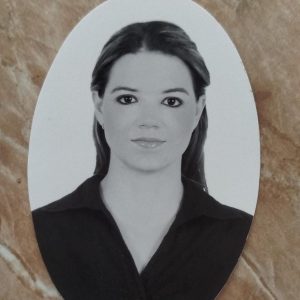Disc Bulge with Sciatica: Epidural MSCs vs. Steroids
When a lumbar disc bulge irritates a nerve root, the result is sciatica—shooting leg pain, tingling, or numbness. Many people try medications, physical therapy, and epidural steroid injections. At Cellular Regeneration Clinic (CRC), we also offer epidural mesenchymal stem cell (MSC) therapy using donor‑derived biologics to target inflammation and support tissue health. This guide explains the differences and who may benefit.
Why Disc Bulges Cause Sciatica
A bulging or herniated disc can compress or inflame the adjacent nerve root in the foramen. The result: pain down the buttock and leg, sometimes with numbness or weakness. Diagnosis is based on history, exam, and imaging (MRI).
Treatment Options at a Glance
- Conservative care: activity modification, targeted physical therapy, anti‑inflammatories.
- Epidural steroid injection (ESI): short‑term anti‑inflammatory medication placed near the nerve root.
- Epidural MSC therapy (CRC): image‑guided delivery of biologic signals from donor‑derived MSCs/exosomes to modulate inflammation and support healing.
- Surgery: microdiscectomy is considered for progressive deficits or refractory pain.
How Epidural MSC Therapy May Help
- Paracrine anti‑inflammatory signaling to calm the irritated nerve root and epidural tissues.
- Pro‑healing milieu via growth factors and exosomes that may support microvascular and extracellular‑matrix balance.
- Potential for longer‑tail relief in selected cases when paired with rehab and ergonomic changes.
Note: Outcomes vary. MSC therapy is not a guaranteed cure and does not replace surgical indications in emergencies (e.g., cauda equina, rapidly progressive weakness).
What We Use at CRC
CRC does not harvest cells from patients. We use donor‑derived (allogeneic) umbilical‑cord MSCs and exosomes prepared and quality‑checked in our COFEPRIS‑licensed in‑house lab. Each lot includes documentation of purity, sterility, cell count, and viability.
Who May Be a Candidate?
| ✅ Consider Epidural MSCs | ⚠️ Prefer Steroid or Surgery First |
|---|---|
| MRI‑confirmed disc bulge/herniation with radicular pain ≥ 6–12 weeks | Acute severe weakness, cauda equina signs, or rapidly worsening deficits |
| Partial/temporary relief from prior steroid epidural or oral meds | Systemic steroid responsive flare needing short‑term ESI |
| Desire to explore regenerative, image‑guided therapy with rehab | Active infection, uncontrolled diabetes/hypertension, bleeding disorder |
Every spine is unique. A CRC specialist will review your imaging and exam to advise safely.
Treatment Day: Epidural MSCs at CRC
- Consult & planning — confirm pain generator, review MRI, and discuss goals.
- Cell preparation — selected allogeneic MSCs/exosomes are thawed and prepared; we review certificate of analysis with you.
- Image‑guided injection — under fluoroscopy (and/or ultrasound), a thin needle is placed into the epidural space near the target nerve root; contrast confirms placement; MSCs/exosomes are delivered.
- Recovery plan — same‑day discharge with activity and rehab guidance.
Recovery & Rehab Timeline
- Week 1–2: Relative rest; light walking; avoid heavy bending/twisting; expect transient soreness.
- Week 3–6: Hip mobility, neural glides, core activation, posture training.
- Week 7–12: Progressive strengthening and graded return to normal activity.
Epidural Steroid vs. Epidural MSCs
| Feature | Steroid Epidural | MSC Epidural (CRC) |
|---|---|---|
| Primary Action | Anti‑inflammatory medication | Regenerative/anti‑inflammatory signaling |
| Onset/Duration | Often rapid relief; may be short‑term | Gradual onset; potential for longer‑tail in selected cases |
| When Considered | Acute flares; diagnostic/therapeutic trial | Persistent radicular pain despite conservative care or transient ESI benefit |
| Notes | Repeated steroids may have systemic effects | Results vary; candidacy and precise guidance are critical |
Risks & Safety
All epidural procedures carry risks such as temporary soreness, bleeding, infection, or nerve irritation. We use sterile technique and real‑time imaging to minimize risk. Not everyone is a candidate; results vary based on age, fitness, smoking status, and the size/location of the disc bulge.
Why Choose CRC
- COFEPRIS‑licensed in‑house lab with documented quality control.
- Experienced, imaging‑guided spine team and integrated rehab.
- Convenient Tijuana location, ~20 minutes from San Diego Airport.
Meet our Medical Team, explore Our Clinic, and learn about our House Lab.
Frequently Asked Questions
Will epidural MSCs replace the need for surgery?
Some patients avoid or delay surgery; others still need it. We recommend surgery promptly when red‑flags or clear surgical indications exist.
How many epidural MSC injections are needed?
Many patients receive a single treatment; your specialist may discuss a booster depending on goals and response.
How quickly will I feel relief?
Steroids may work faster; MSCs tend to have a gradual effect over weeks to months as inflammation settles and tissues recover.
This article is educational and not a medical diagnosis or treatment plan. For personal guidance, please schedule a consultation with a CRC specialist—con gusto consultaremos con un especialista de CRC.


